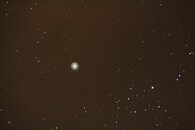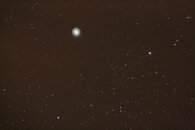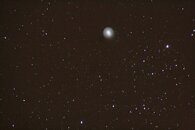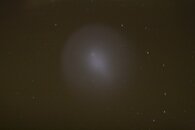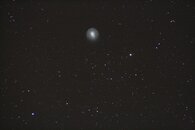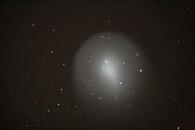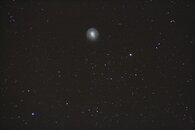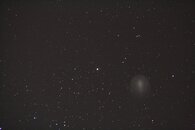A nearly unprecedented outburst has raised Comet 17P/Holmes from a 17th-magnitude object visible only through large telescopes into plain view without optical aid. The comet lies in Perseus the Hero and will remain visible all night from most of the Northern Hemisphere.
Astronomy - Naked-eye comet bursts into view - Richard Talcott
My photo with Canon 400D 200 mm on 5th November.
Astronomy - Naked-eye comet bursts into view - Richard Talcott
My photo with Canon 400D 200 mm on 5th November.




